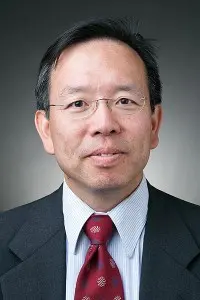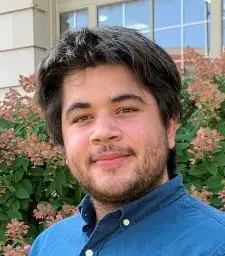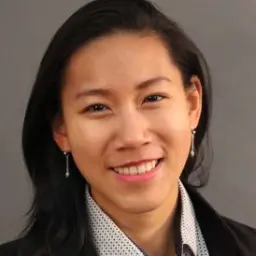Chemical and biological engineers spend a lot of time studying the small stuff—molecular-level catalytic reactions, virus lifecycles and other micro- and nanoscale phenomena. But in the fall semester of 2020, graduate students taking CBE 781, Biological Engineering: Molecules, Cells & Systems, at the University of Wisconsin-Madison got a broader perspective, investigating how the principles of biological engineering, data analysis and complex modeling can apply to contemporary societal issues.
 John Yin
John Yin
The course, taught by John Yin, the Vilas Distinguished Achievement Professor in chemical and biological engineering at UW-Madison, is designed as an introduction to biological engineering for chemical engineers since the two disciplines often cross over. It is a detailed primer on biological concepts, progressing from the molecular level to the cellular level all the way up to tissues and how environmental cues affect cellular behavior. But Yin wanted students to take an even broader view and investigate how biological engineering can impact society as a whole—something he often does in his own research, including study of the ways viruses use cellular mechanisms to reproduce.
That’s why for one of two team projects, he tasked students to develop computational models to address contemporary societal issues using chemical and biological engineering principles. “It’s actually almost an unreasonable assignment because you’re asking these students to do something that is also challenging for professors to do,” says Yin. “But I think it adds an extra dimension to the course. They realize the ways they can work on problems that we read about in the newspapers.”
One team looked at the health impacts of recent California wildfires and several teams modelled COVID-19 dynamics. PhD student John Estela García, who studies polymers for his thesis, was a member of one of the COVID-19 teams. While very few members of the group had modeled data before, Yin encouraged them to push their boundaries. They started with basic COVID data collected from 10 states and refined their model over a two-month period, reading the latest research papers and incorporating new insights.
 John Estela Garcia
John Estela Garcia
“Our model took into consideration the activity of the initial disease, its death rate, its recovery rate and other factors,” says Estela.
The team had to assess the quality and relevance of each type of data and compare its model against others to see if it made sense. While the point of the project wasn’t to produce a fully functional model, Estela says he was impressed by the team’s effort. “With just a bit more work and tweaking, our model could have been useful as a scientific tool,” he says.
PhD student Lisa Je was part of the team that looked into the 2018 Camp Fire, the deadliest fire in California history. Je along with teammates David Cole and Jake Reiss examined carbon monoxide released from the blaze, hoping to assess its impact on human health. “We created a computational model that could predict how much carbon monoxide was emitted by the amount of biomass of the trees that were burned within the area,” says Je.
The model revealed that the fire likely did not release enough carbon monoxide to cause health issues—but that initial research helped Je realize there were other more harmful pollutants to assess.
 Lisa Je
Lisa Je
The final project for the class was writing a research proposal for a bioengineering project or aiding Yin in a research project modeling the human urinary tract in the hope of developing new bladder control therapies.
For her final project, Je continued analyzing the Camp Fire. She realized that releases of toxic 2.5 micron particulate matter as well as hydrogen chloride, which can irritate lungs and cause a cascade of negative health effects, could have health impacts. However, data on the release of those pollutants is lacking. Je’s research proposal recommended deploying specific novel technologies like sensors to obtain quantitative emission rates from wildfires and connect this data to acute and chronic health issues first responders are currently experiencing.
“The class exceeded my expectations,” says Je. “I got a lot of real-world experience and the problems I worked on are ones I care about and could see myself working on in my future career.”
Estela, who worked on the urinary tract research for his final project, agrees the class was more than an intro to biological engineering. “I got more than I bargained for, going from a chemical engineering background to exploring these biological systems at a graduate level,” he says.
The experience of gathering information for the model also led Estela to new resources and to engage with researchers from other disciplines and universities. “The entire course wasn’t just about biology; it was also an excellent way to improve our information gathering skills,” he says. “One of the greatest takeaways was not just having a professor teach a subject, but inspiring us to go beyond what he was teaching us.”
In that vein, Yin also required his students to cold-call or to contact an expert in their field to ask for career advice. “I think it’s important for students to get out of their comfort zone,” he says.
He helped them craft short, compelling introductory emails to their experts to break the ice. While it didn’t work in every case, a number of students were able to set up interviews and get some good career counseling.
The goal of all of this, Yin says, is to prompt students to start building their networks, think more broadly and consider the societal implications of their work, even if their focus is fundamental research. Not only is it important to the wider scientific project, but it leads to better, more engaged researchers. “Oftentimes, their research group has already established its framework and its research approaches, which graduate students don’t question,” says Yin. “While focusing on research in grad school is their highest priority, our students also need to better appreciate how their training positions them to take on our society’s greatest challenges.”